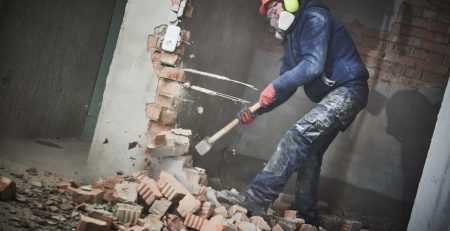3 Key Working at Height Project Incidents and What We Can Learn from Them
Britain’s national regulator for workplace health and safety, Health and Safety Executive (HSE), reported three work-at-height incidents on its news pages in 2018. No organisation ever has the intention of harming its employees, but accidents can, and do, happen. It is vital to carefully look at these incidents and understand what went wrong, so that, ultimately, we can learn from them.
Apprentice Falls and Sustains Injuries: Company Fined £100,000
A 16-year old apprentice joiner working for a scaffolding company fell approximately four metres off a scaffolding platform, sustaining devastating injuries during a work at height project in South Yorkshire.
The case was brought in front of the Sheffield Magistrates’ Court this year, where the incident, which occurred in September 2016, was presented. The teenage apprentice was passing roof tiles from the loading bay to a colleague when he caught his foot in a gap between the scaffold platform and the loading bay and plummeted to the ground.
His injuries included:
- a fractured cheekbone
- a broken wrist
- bruised ribs
- a deep cut above his left eye, which required thirteen stitches
The company pleaded guilty to breaching Regulation 8 (a) of the Work at Height Regulations 2005 and accepted a £100,000 fine, plus £918 in costs.
What went wrong: According to the HSE, the loading bay edge protection did not include an intermediate guard-rail or toe board. Such safeguards could have prevented the incident.
Worker Sustains Significant Injuries after Falling from Ladder: Company Fined £10,000
In another hearing this year, the Greater Manchester Magistrates’ Court heard the case of an incident that happened in January 2016, where a worker suffered injury while working at height. While cleaning the gutters on a farm building, his ladder slipped down the face of the building.
The worker sustained the following injuries:
- a broken arm,
- a broken shoulder
- a fractured elbow
The farming company that employed him pleaded guilty to breaching Section 2 (1) of the Health and Safety at Work, etc. Act 1974 and Regulation 4 of the Reporting of Injuries, Diseases and Dangerous Occurrences Regulations (RIDDOR). It was fined £10,000 and ordered to pay costs of £5,827.
What went wrong: There were inadequate control measures in place with regards to working at height. The HSE investigation found that “the defendant had also failed to report the accident within the required timeframe.” Employers should ensure that there is appropriate communication of information, training and supervision in place to not only prevent such incidents from occurring, but also to ensure that any accidents that do take place are swiftly reported.
Workers Exposed Workers to Fall from Height Risk: Company Fined £10,000
Reading Crown Court heard how a solar panel installation company and its sole director continually failed to abide by safety regulations and exposed his workers to significant fall from height risks. This was despite continued warnings by HSE, which the employer failed to heed.
An HSE investigator, during an inspection, identified two employees working on a roof without any fall protection. At this time, the company was served a prohibition notice. Three days later, upon his return, the inspector found that the director allowed work to continue, despite unsafe conditions and inadequate equipment provision.
The company pleaded guilty to breaching Sections 2 (1) and Sections 33 (1) (g) of the Health and Safety at Work, etc. Act 1974 and Regulation 6 (3) of the Work at Height Regulations 2005. The company was told to pay £10,000 in fines and ordered to pay additional costs of £6,300.
Consequently, the company director pleaded guilty to breaching two counts of Section 37 (1) of the Health and Safety at Work, etc. Act 1974 and was fined £500.
What went wrong: The company continually failed to heed prohibition notices. Contractors have a duty of care to their employees and must be dedicated to meeting standards of safety.
Lessons Learned from All Three Working at Height Projects
Nothing supersedes safety as a priority when it comes to working at height projects. As we’ve seen from the considerable fines imposed on these companies, it pays to be diligent when ensuring that satisfactory safety provisions are in place. When accidents happen, both employer and employee pay a hefty price — for the latter, it could be their life.
As HSE inspector Dominic Goacher puts it: “All work at height must be properly planned, irrespective of the task being undertaken, and those in control must ensure suitable control measures to prevent falls are in place throughout the duration of the project”.
These work at height projects have clearly failed to meet safety standards. As is often the case, negative incidents tend to get the most coverage and are paid the most attention. In reality, these are rare incidents, with the UK consistently having one of the lowest rates of fatal injury across the EU. During times like this, it pays to remember the many more work at height projects executed with safety measures meticulously adhered to.












